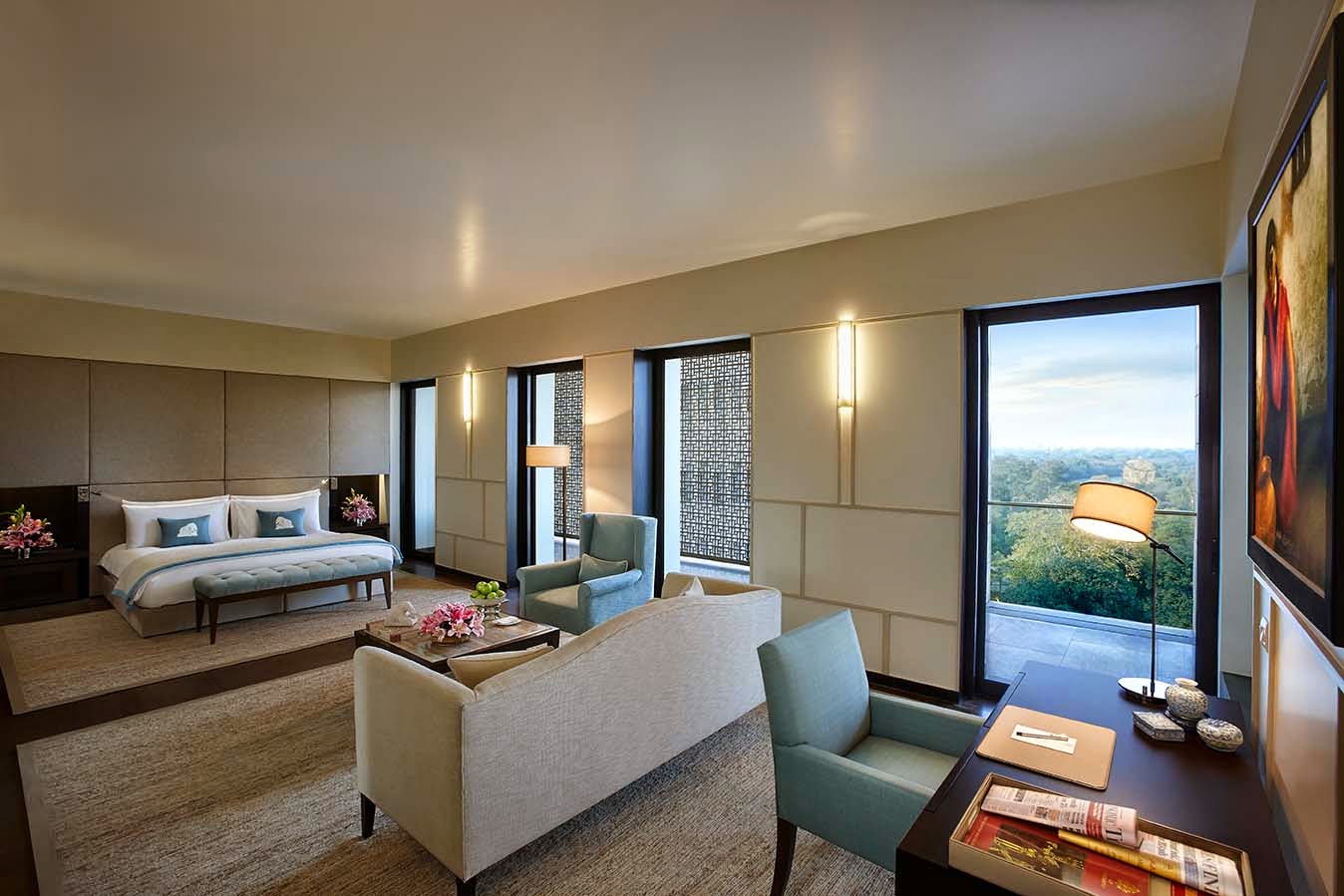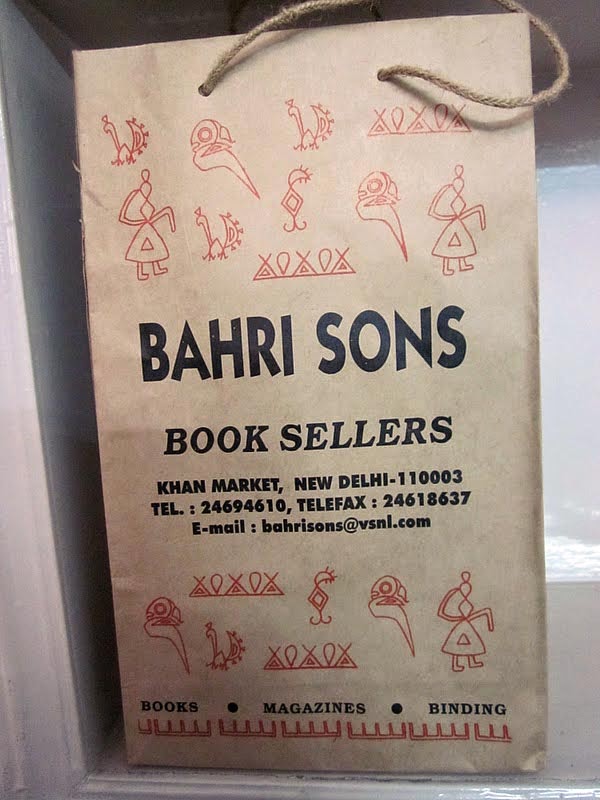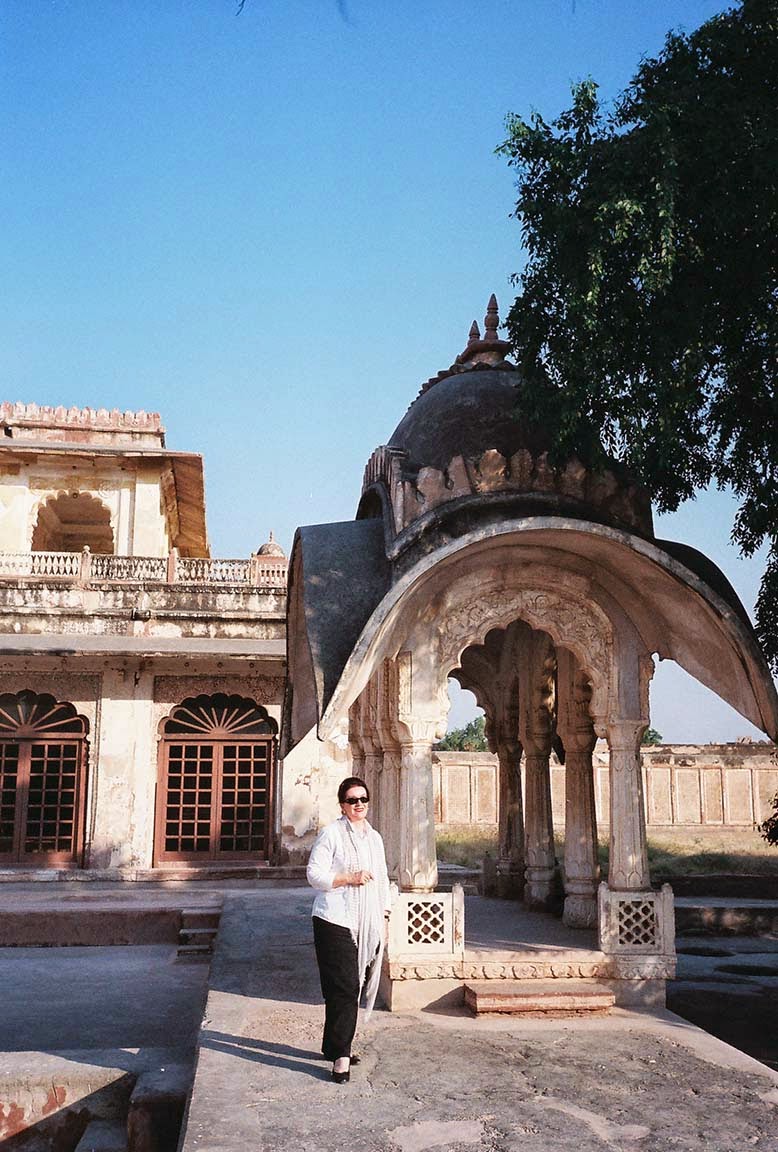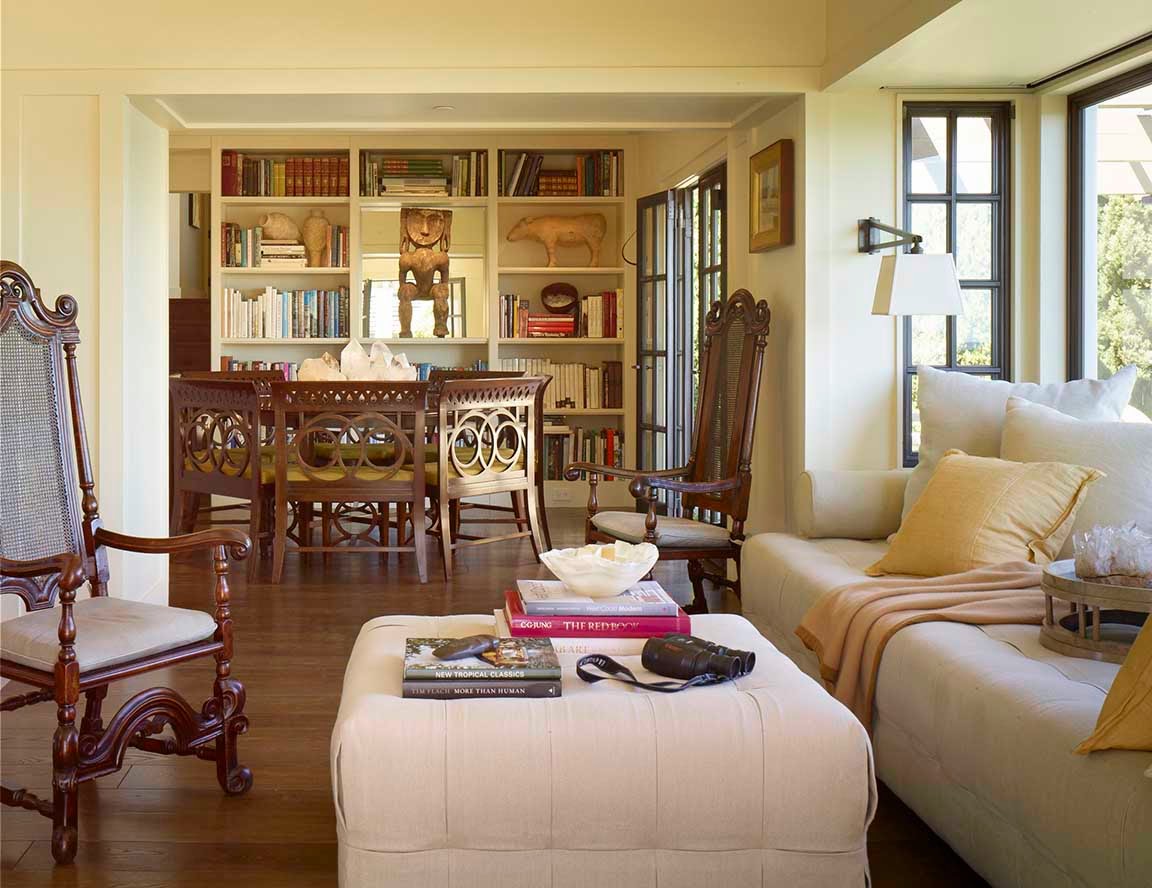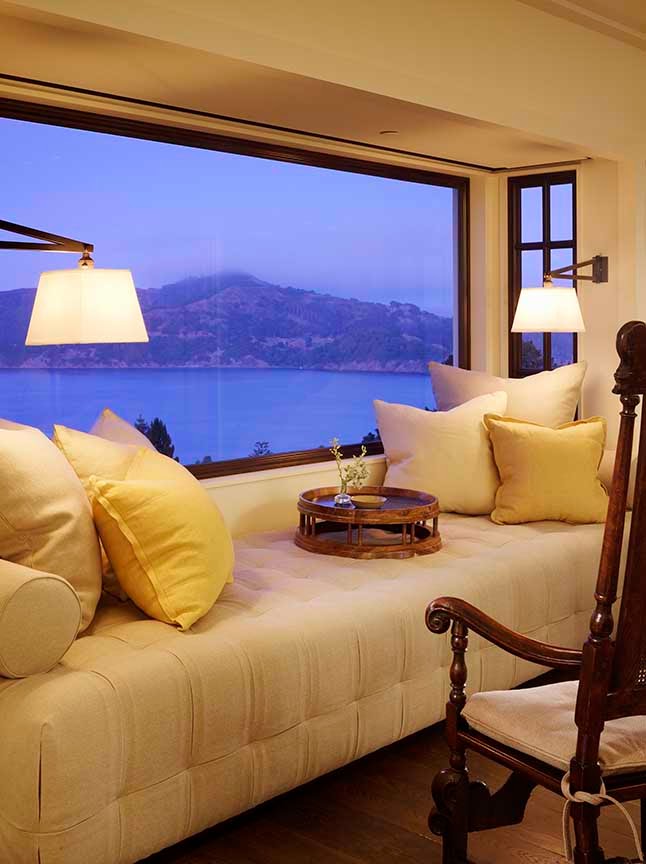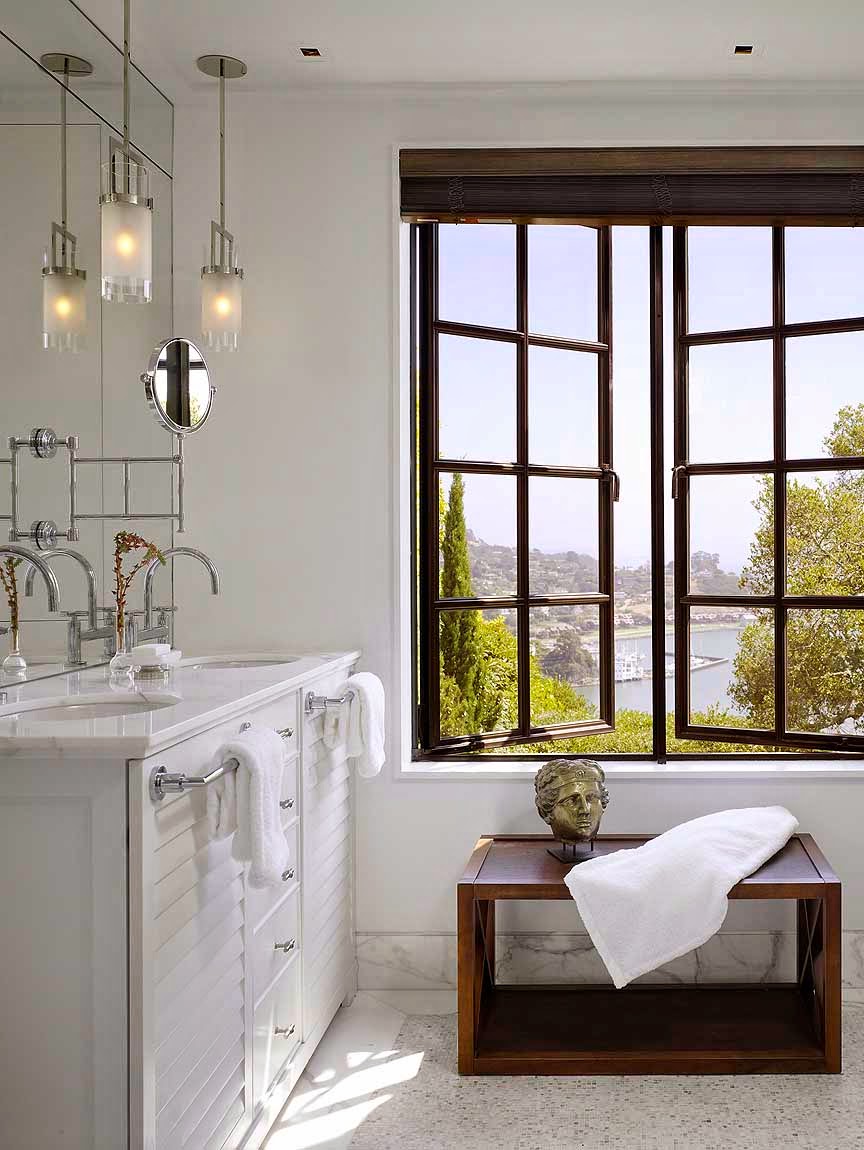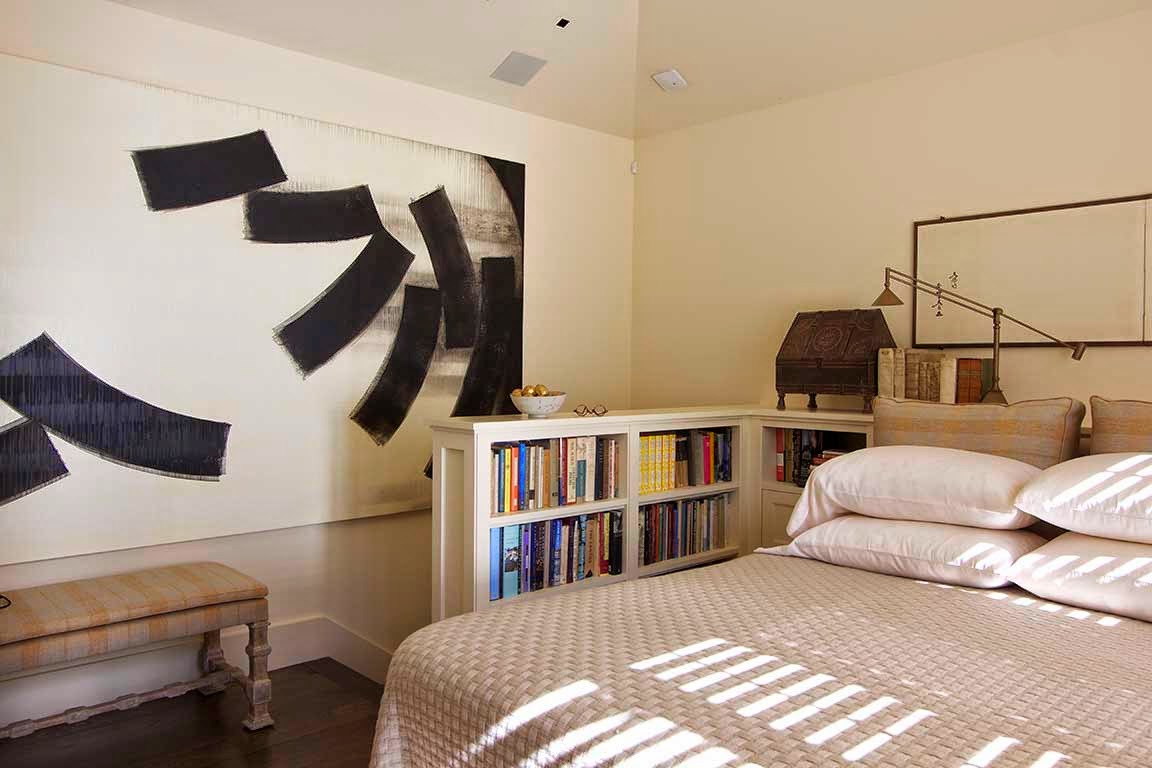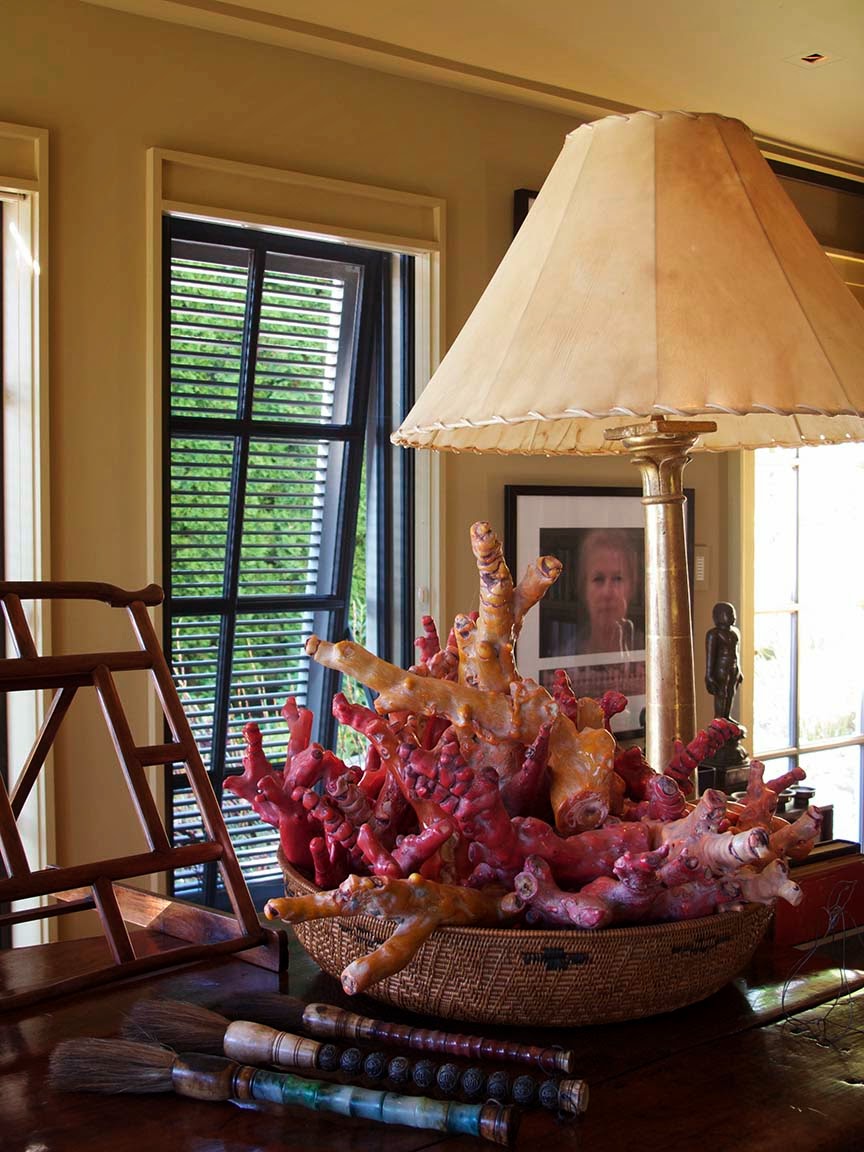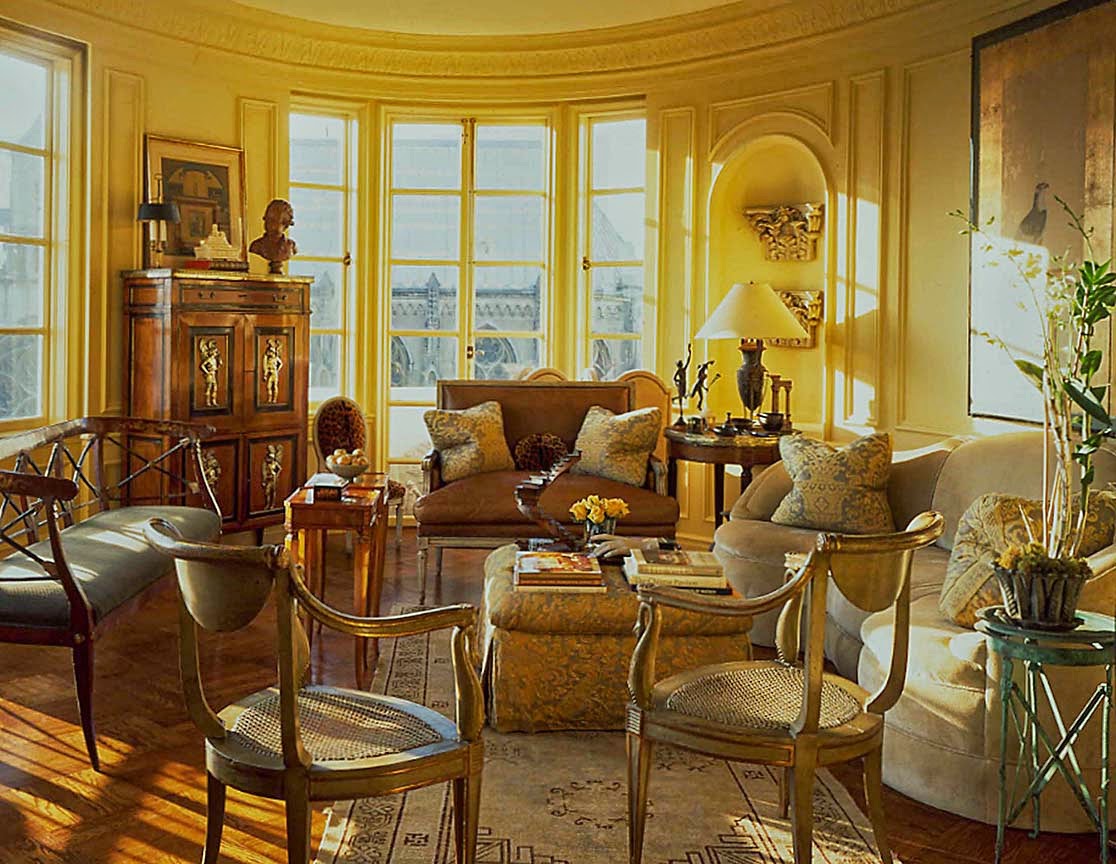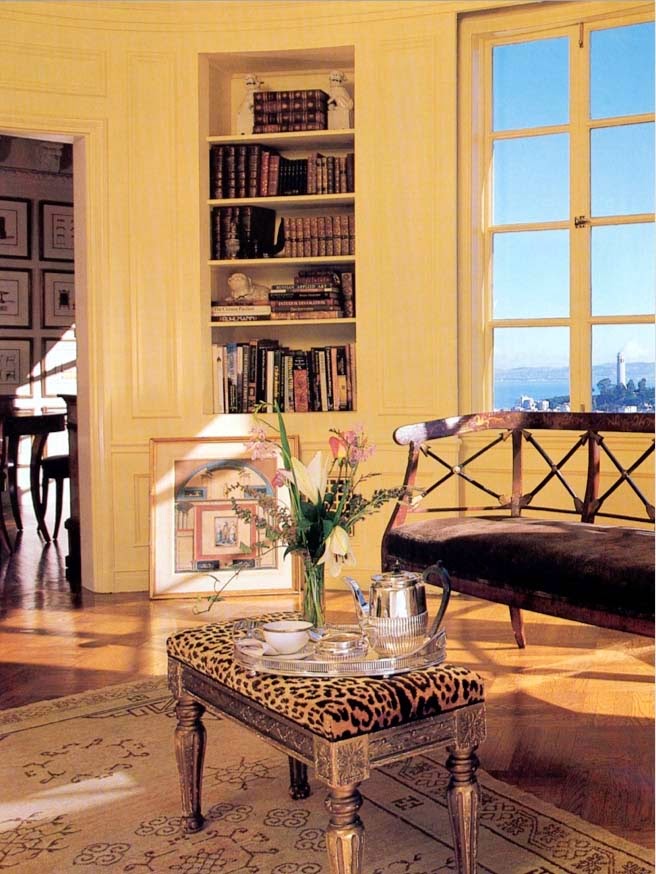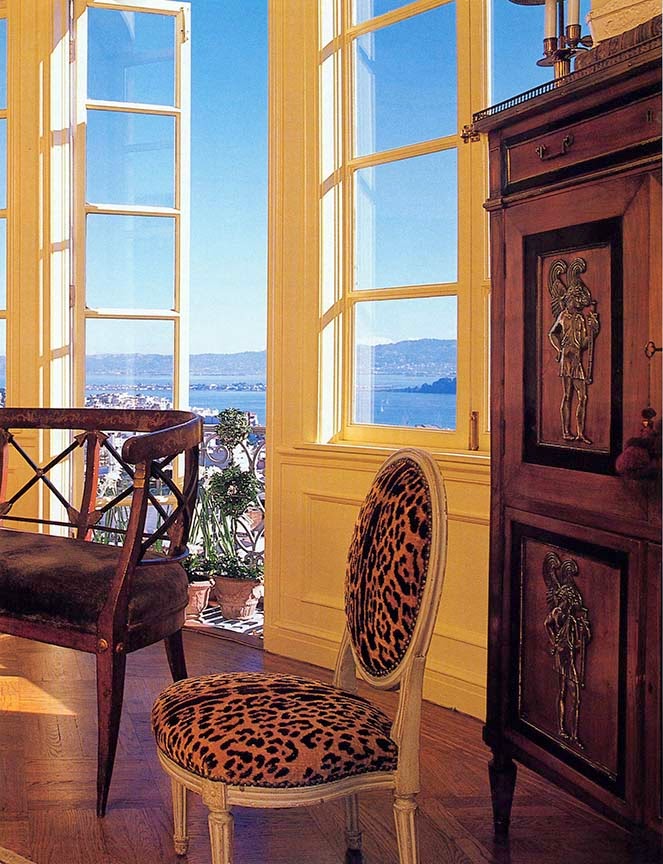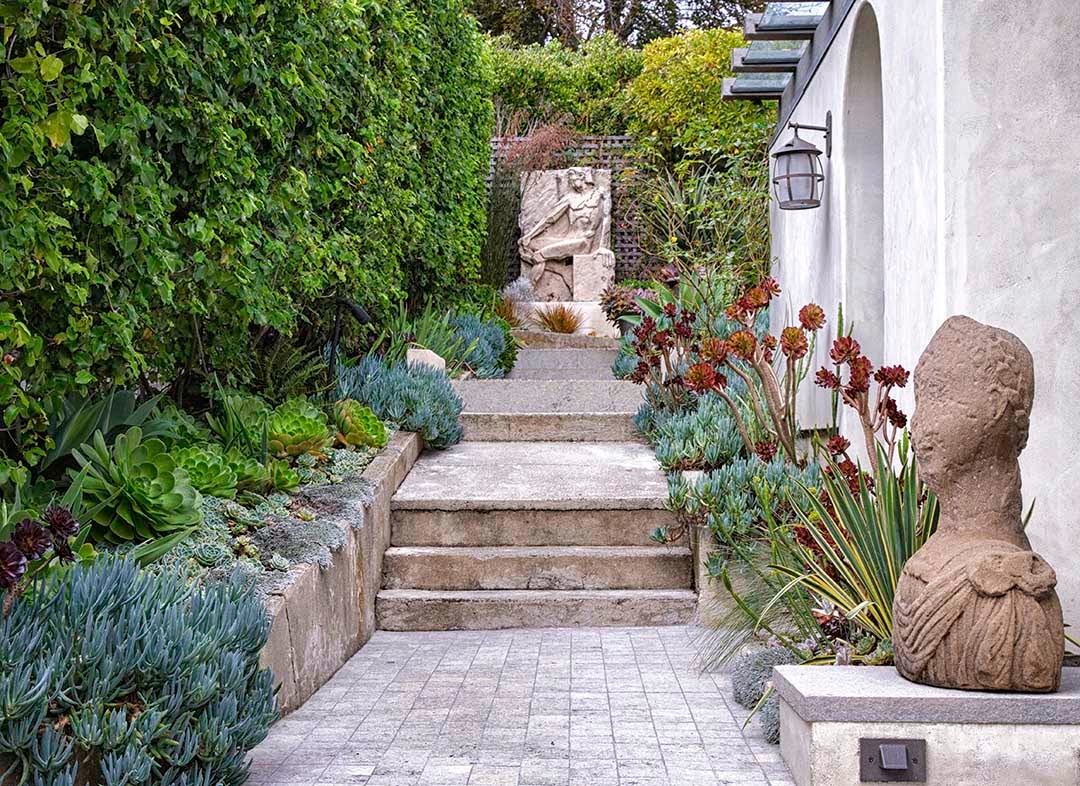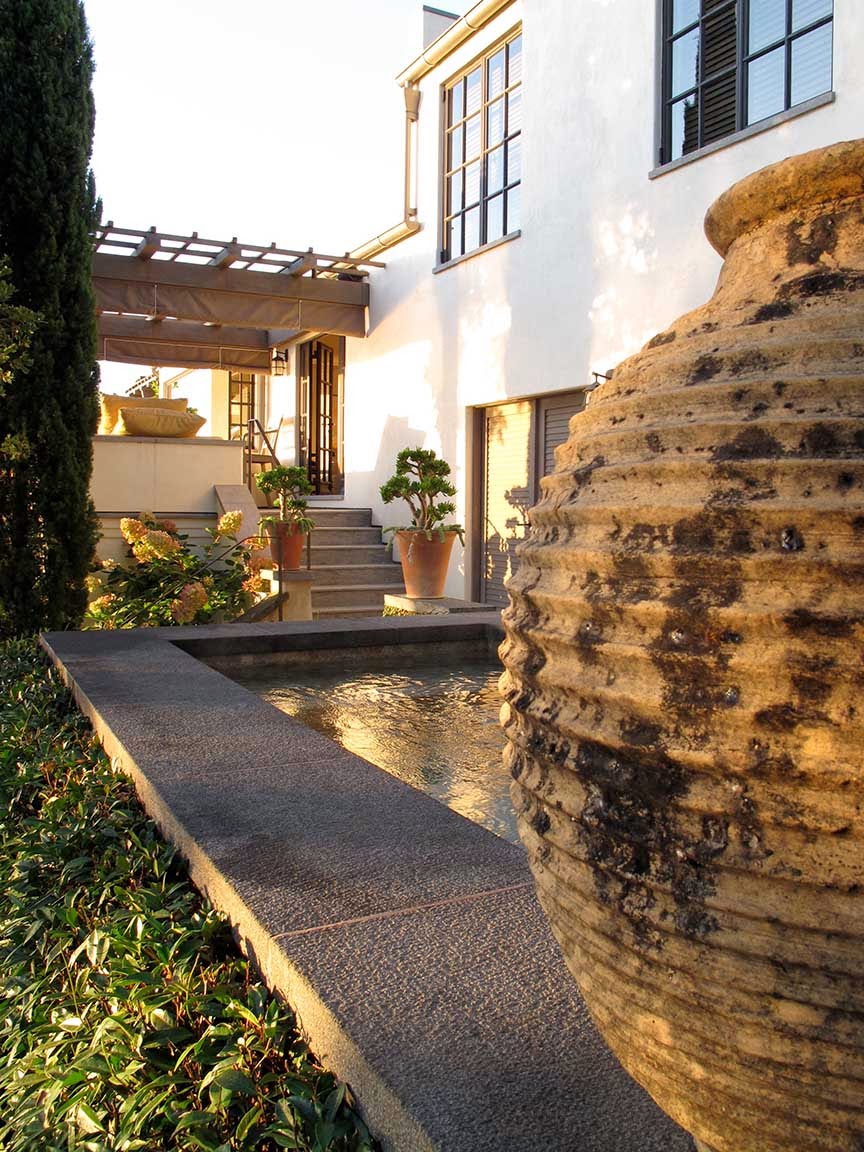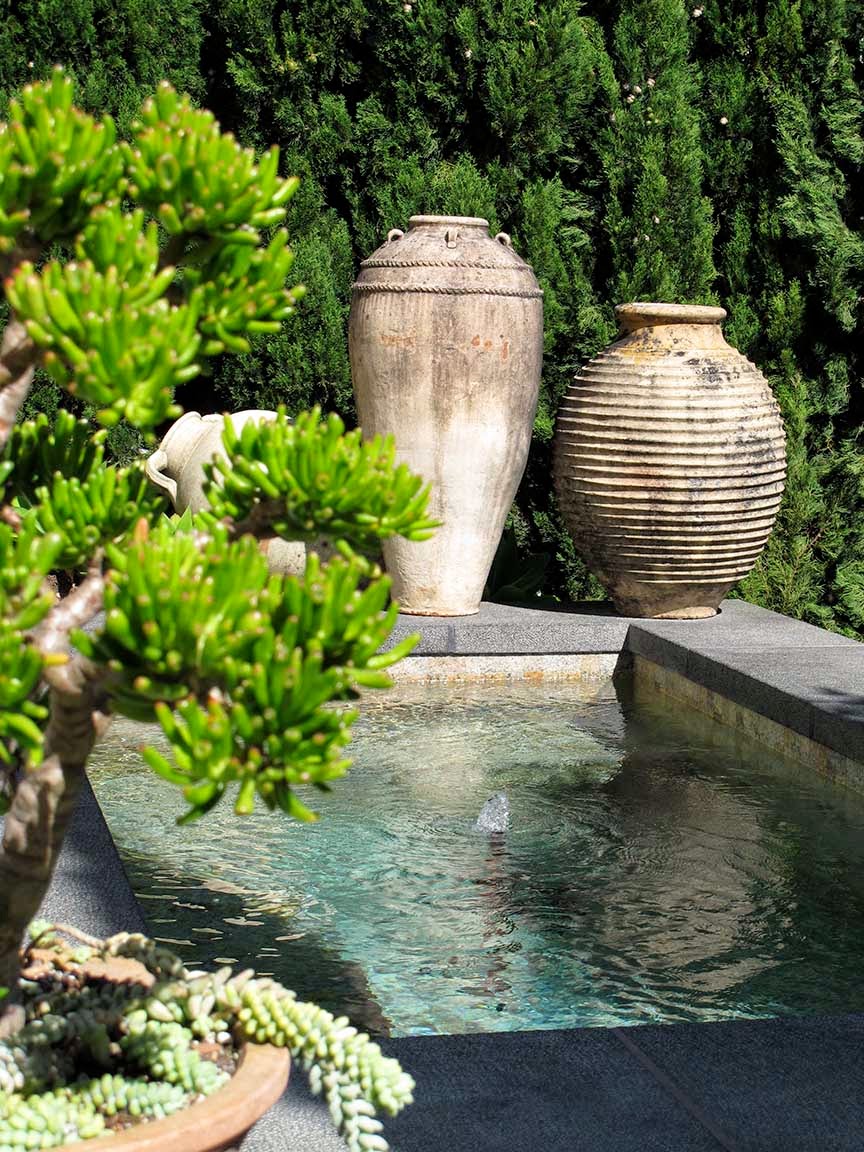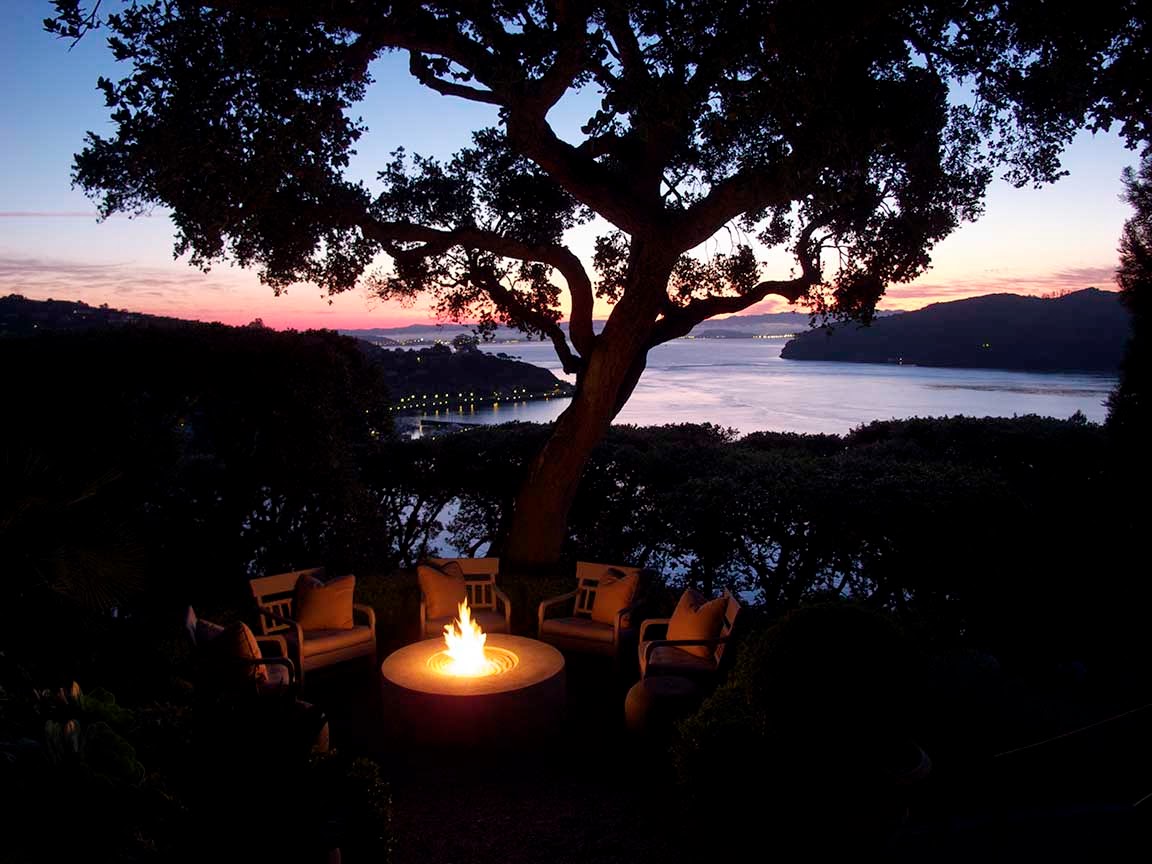The hotel, books, cashmere, more books, tea, and a surprising visit.
I recently returned from a visit to New Delhi. I’ve been traveling there since I was a student. I love India and travel there — always exploring new regions, new experiences, and meeting new people, rediscovering old favorites. I have new pictures and new places to introduce to you.
Come with me to the subcontinent to discover an architectural masterpiece, The Lodhi, my favorite hotel in Delhi.
We’ll visit the best bookshop in India. I’ll spill my secrets and tell you where to buy beautiful cashmere shawls and the best Indian tea. And I’ve updated my best India books list.
I’ve opened my photo album of a visit to the Presidential Palace (formerly the Viceroy’s Residence) designed by Sir Edwin Lutyens, and a great highlight of a visit to New Delhi
Books: this week I have two fantastic lists of books on India. One list was selected by Anuj Bahri Malhotra, the owner of the great book company, Bahrisons. The other is a list of my favorites, with new additions.
I propose: this post is long and full of detail, information and insider tips on India. Print it out and read it like a magazine, perhaps. Or treat yourself to some Assam tea (or PG Tips, which I often enjoy), in a hot teapot. Perhaps a sip of mango juice, or coconut juice might be very apt and refreshing. Enjoy it—and I hope you love all of this information. Let me know.
Insider tip for architects and designers: Visiting Lutyens’ Delhi is a must. Lutyens’ greatest work was the majestic Vice-Regal Headquarters. Working with the finest Indian construction company and craftsmen he incorporated Indo-Saracenic motifs, as well as Indian stone basins on top of the building as very dramatic (and very Indian) water features.
Lutyens’ Palladio-influenced and rather austere classical buildings were modified to include Moghul chattris on the roof. Throughout the gardens are dramatic statues of elephants and fountain sculptures of cobras on pedestals, as well as bas-reliefs around the base of the Jaipur Column.
A travel tip: For your next trip to India, I propose that you book online for a visit to the interior of the Rashtrapati Bhavan building. It’s open on a very limited timetable. Much of its original furnishings and interior architect designed by Lutyens is accessible. You can imagine the residents, Lord Louis and Lady Edwina Mountbatten and their attendants, entertaining and greeting officials and royalty.
I had a Sunday afternoon private tour—and found it so fascinating, I did it twice. Lutyens is hardly mentioned in guidebooks or ‘must see’ lists.
For designers, architects, and those obsessed with architectural heritage and Lutyens, it is a rewarding visit.
I’ve written about The Lodhi before. The hotel was formerly an Aman property—and it maintains that high standard of style and care. I find it extremely congenial. It’s quiet.
An ethereal Meier-modern new hotel with a serene garden setting and elegantly delineated architecture is the new chic place to stay in Delhi. It’s The Lodhi, just four years old, and already a favorite of stylish young Delhi couples, worldly art collectors, and international travelers intent on getting to know the fast-changing and surprising new India.
It’s a favorite hotel for Silicon Valley talent like art collector Komal Shah, a former Yahoo exec who recently joined the Asian Art Museum board. Top interior designers like L.A.-based Michael S. Smith, and Jean-Louis Deniot, with headquarters in Paris, land there on business trips.
The first impression of The Lodhi is of massive walls of carved slabs of marble deployed with precision and superb restraint. An austere and highly refined architectural sensibility is at work here. Pared down and gracefully delineated, the walls of honed ivory-colored stone are reminiscent of the pale carved exterior walls of the Taj Mahal.
India is always celebratory and ornate, and many travelers arrive specifically to immerse themselves in the excitement of hallucinogenic hues, and the jangle of music and crowds.
For me, The Lodhi is very much in the Moghul tradition of generous hospitality—but it’s India with a modern style sensibility, one that is truly Indian and poetic, without the razzle-dazzle. .
The hotel architect and designer is Australian Kerry Hill, based in Singapore and Western Australia. He is a master of his craft. The Lodhi feels India modern, but chic and 21st-century. Delhi without a trace of nostalgia.
Hill noted that he referenced India’s great history of palaces and temples and past building traditions through suggestion and association rather than replication, and through the reinterpretation of indigenous building forms as opposed to mimicry.
“We prefer to build upon what is there and to contemporize our understanding of what it can be,” said Hill. “I think of our design for The Lodhi as being current, but filtered through a sieve of traditional values.”
At the light-filled limestone entrance a large carved black stone water basin is filled with brilliant orange marigolds.
A butler silently guides guests along an enfilade of silent hallways. In the suite, a graceful bedroom has an efficient series of adjacent wardrobes, luggage stands and dressing tables. Everything in the right place. The scent of fresh tuberoses wafts into the air.
The hotel is expertly and gracefully co-managed by New Zealand-born former diplomat Robyn Bickford, and her husband, Manav Garewal. They pamper guests, opening up their Black Book for special sources for cashmere shawls, finding rare tickets for an event, taking care of all details.
In each suite, through a tall shuttered door is a wide sheltered stone terrace. Each suite has a heated plunge pool and on a terrace that’s open to the fresh air.
Privacy is perhaps the most precious travel luxury. The Lodhi feels like a personal residence. There are no obtrusive signs, and staff greets guests by name.
The hotel is set on 6 acres, has two wings, nine floors, thirty-nine rooms and twenty-eight suites, and there’s a panoply of restaurants, a hair salon, a lap pool, plunge pools, all sheltered by jaali screens to modulate light and intense outdoor heat.
The décor throughout has a very light and airy sensibility of modern Anglo-Indian, with dark exotic wood wall cabinets, bronze bowls filled with pomegranates, stone bowls with fresh tuberose blossoms, everything cohesively modern Indian. All furniture was locally crafted.
I linger among the stacks at Bahrisons for hours—looking through books on design, architecture, biography, and finding dozens of books to send back to California. Staff does an extremely efficient job of shipping. My recently purchased books arrived home before I did. The bookshop is so popular that they re-stock three times a day. Careful…they close for lunch from 1-2pm.
I checked with Anuj Bahri Malhotra and he suggested the following list of books on India.
BAHRISONS BOOK LIST:
Everything written by William Dalrymple. (www.williamdalrymple.uk.com)
“He knows India, he is a superb historian, and his writing is vivid and authoritative—and witty. Highly recommend,” said Anuj Bahri.
The witty detective novels of Tarquin Hall, featuring detective Vish Puri. (www.tarquinhall.com).
“Tarquin shows his love of India and Delhi in this amusing series. He knows Delhi today and it shows,” said Mr. Bahri.
Delhi by Heart: Impressions of a Pakistani Traveler by Raza Rumi (Harper Collins). An intimate anecdotal travelogue introducing readers to the buildings, but also people, characters. Inspiring. Said Anuj Bahri Malhotra: “It’s like a guided walk, with vivid narration.”
Delhi: A Thousand Years of Building by Lucy Peck (Roli Books) A highly detailed insight into Delhi’s architecture heritage. Well illustrated.
Delhi: A Novel by Kushwant Singh (Penguin). “It’s irreverent and inventive, it’s magical realism. A bestseller,” said Mr. Bahri.
Perpetual City, A Short biography of Delhi, by Malvika Singh (Aleph). Singh, a noted Delhi journalist, is also the author of a recent reference book on Lutyens Delhi. This is her love letter, very insider and full of lively anecdotes. Opinionated. Excellent.
Delhi: Fourteen Historic Walks by Swapna Liddle. Heritage discoveries, secret walks and classic sites like the Red Fort, Lodhi Gardens and Humayun’s Tomb (I’ve written about it here).
Trickster City Writings from the Belly of the Metropolis by Shveta Sarda (editor). “These young writers are fresh, they know Delhi, and they chronicle emotion, experience, events, some rather documentary,” said Anuj Bahri.
DIANE’S INDIA BOOKS FILE:
Let’s say you’ve never been to India, and you’re excited and very curious and scared and nervous…and want to know more.
Check through all of these lists and Mr. Bahri’s list. And start collecting the ones that appeal to you. Read non-stop. The information and knowledge—and sense of India—you gather and harvest will enrich your trip and explorations.
I have a lifetime of books on India. I read biographies (the Maharani of Jaipur, Sri Aurobindo, Gandhi), history (all of William Dalrymple’s volumes), memoirs (Pamela Hicks), and many Indian fiction writers and dynasties of literary families (the Desai family) and many books on histories of the maharajahs and Indian life, films (Satyajit Ray) culture, music, architecture and textiles.
I recently read The Guide by R. K . Narayan (Penguin) about small-town Indian life. Enchanting. I also found Chowringee by Sankar (Mani Sankar Mukherji) (Penguin). It’s set in Calcutta, and it immediately immerses the reader in its hullabaloo.
I love the books of writers like V.S.Naipaul, as well as Amitav Ghosh, and Jhumpa Lahiri (writing about Indian expatriates in books like ‘The Interpreter of Maladies’)…her writing is exquisite. I also love Kiran Desai (“The Inheritance of Loss) and books by her mother, Anita Desai.
Books I favor and have enjoyed are background, in-depth learning, rich detail, research, factual information always written with grace, charm, wit.
‘City of Djinns’ by William Dalrymple (2003) is a vivid account of his first year living in New Delhi. He’s now become a favorite historian of the region’s great stories. Dalrymple’s nature is contrarian, and often dyspeptic, but he has a lovely admiration and intense interest/passion for Indian people and history.
‘The Last Moghul’ also by Dalrymple, offers the panorama of one of the last significant rulers and dynasties.
‘Passage to India’ by E.M. Forster (1924) paints a sympathetic and textured account of British/India encounters during the colonial period.
‘At the Court of the Fish-Eyed Goddess, Travels in the Indian Subcontinent’ by William Dalrymple (1998) is a wide-ranging series of essays on Indian life, culture, politics.‘A Princess Remembers The Memoirs of the Maharani of Jaipur’ by Gayatri Devi (1996) sketches a romantic view of her childhood, subsequent marriage to the Maharajah of Jaipur, and jetset life. She founded schools for girls and a grade school in Jaipur, and was instrumental in protecting and fostering traditional fine crafts and arts of the region.
‘The Raj Quartet’ by Paul Scott. These are the books on which ‘Jewel in the Crown’, the hit PBS show, was based.) Scott’s writing is wonderfully accomplished and richly sympathetic to all of his characters. British, insider, revealing.
‘Freedom at Midnight’ by Collins and LaPierre. Blockbuster, full of detail, research. A closeup view, with private and upclose knowledge of Gandhi's life and death. Must read.
‘Daughter of Empire: Life as a Mountbatten’ by Pamela Hicks (2011) offers insight into the last days of the Raj—and she was in the center of it all.
‘Indian Summer The Secret History of the End of Empire’ by Alex von Tunzelman (2009). I read this on the way to India, when it first came out. Her research is impressive, and it’s another slice of insight into this complex time of history.
‘Chasing the Monsoon’ by Alexander Frater (1998). Witty English writer sets off to follow the monsoon, one summer. Romantic and charming.
And Robyn Bickford recommends the following India books, for different perspectives:
Quilts of India-Timeless Textiles by Patrick J Finn published by Niyogi Books. It is such a pleasure to learn more about crafts and decorative arts of India. This is is a great record with very clear photos of another dying art.
Sam Miller, a young English writer, has written two books, Delhi: Adventures in a Megacity and A Strange Kind of Paradise: India through Foreign Eyes which are witty and fresh, and both eminently readable.
I know you’ll want to read them all. And tell me your favorites. I love discovering new books.
Happy reading!
The Great Find: Kashmir Loom
Kashmir Loom shawls and scarves are available at Barney’s New York stores around the US, and at many international stores and boutiques. But I prefer to go to the source—where every style is available.
Robyn Bickford at The Lodhi suggested that I would enjoy meeting Jenny Housego, the co-owner of Kashmir Loom. I made an appointment to see the company's selection of fine cashmere, silk, wool and cotton textiles made for the Indian and international markets. Many cashmere connoisseurs consider the company's shawls and blankets to be the finest available.
Kashmir Loom was created by Jenny Housego and her Kashmiri partners, brothers Hamid, Zahid, and Asaf Ali, and their family in Srinagar, Kashmir.
Jenny, who is English and lives in New Delhi was formerly a textile historian, and worked at the Textile Department at the Victoria and Albert Museum in London.
I arrived at the Kashmir Loom showroom. The company makes the most exquisite traditional shawls and scarves in handspun and hand-loomed cashmere.
Newest designs include the pioneering use of shimmering metallic threads in hand-woven shawls. Gold, silver and rose gold shawls are very beautiful. The quality of the textiles is the best I’ve seen in India. I love embroidered shawls in very fine natural undyed handspun cashmere (think taupe cashmere with exquisite borders of contrasting silks)—but they also weave rainbow-bright shocking pink, turquoise, magenta, and indigo shades to brighten a winter day.
Prices from $150 for a natural cashmere scarf.
By appointment only: Retail
C-65, Basement, Nizamuddin East, New Delhi 10013 India
Phone: +91.11.2431.8947, 4058.8650
www.kashmirloom.com
Indian Tea
I love Fortnum & Mason’s Assam Superb, packaged in an elegant pale celadon canister.
But in India, I always taste and buy special teas…that are only available in India.
My favorite source is the company that supplies tea leaves to The Lodhi hotel— Mittal Stores.
The selection of loose-leaf teas includes many Assam types and Darjeeling, Nilgiri and Sikkim, as well as Chinese. Very authentic and traditional. Inexpensive and light to pack in luggage. And so enjoyable at home.
12, Sunder Nagar Market, New Delhi is my favorite of their locations.
www.mittalteas.com
Information: [email protected]
Details:
The Lodhi
Hotel images courtesy of The Lodhi, New Delhi, used with permission.
Images: Elephant statue photos by Diane Dorrans Saeks (and my driver).
Images of Kashmir Loom, courtesy Kashmir Loom.
Images of Bahrisons, courtesy Bahrisons.
I recently returned from a visit to New Delhi. I’ve been traveling there since I was a student. I love India and travel there — always exploring new regions, new experiences, and meeting new people, rediscovering old favorites. I have new pictures and new places to introduce to you.
Come with me to the subcontinent to discover an architectural masterpiece, The Lodhi, my favorite hotel in Delhi.
We’ll visit the best bookshop in India. I’ll spill my secrets and tell you where to buy beautiful cashmere shawls and the best Indian tea. And I’ve updated my best India books list.
I’ve opened my photo album of a visit to the Presidential Palace (formerly the Viceroy’s Residence) designed by Sir Edwin Lutyens, and a great highlight of a visit to New Delhi
Books: this week I have two fantastic lists of books on India. One list was selected by Anuj Bahri Malhotra, the owner of the great book company, Bahrisons. The other is a list of my favorites, with new additions.
I propose: this post is long and full of detail, information and insider tips on India. Print it out and read it like a magazine, perhaps. Or treat yourself to some Assam tea (or PG Tips, which I often enjoy), in a hot teapot. Perhaps a sip of mango juice, or coconut juice might be very apt and refreshing. Enjoy it—and I hope you love all of this information. Let me know.
New Delhi Highlight: A Visit to Rashtrapati Bhavan, the President’s Palace
Designed in 1912 and completed in 1929, Rashtrapali Bhavan is one of the most fascinating buildings in New Delhi (and hardly visited at all by travelers). On 320 acres, it includes Moghul gardens, parade grounds, the president’s quarters, government buildings, galleries, statuary. It embodies Raj India. I discovered the fascinating way Sir Edwin Lutyens deployed Indian indigenous materials (red sandstone), and adapted Indian imagery in his entirely classical structure.Insider tip for architects and designers: Visiting Lutyens’ Delhi is a must. Lutyens’ greatest work was the majestic Vice-Regal Headquarters. Working with the finest Indian construction company and craftsmen he incorporated Indo-Saracenic motifs, as well as Indian stone basins on top of the building as very dramatic (and very Indian) water features.
Lutyens’ Palladio-influenced and rather austere classical buildings were modified to include Moghul chattris on the roof. Throughout the gardens are dramatic statues of elephants and fountain sculptures of cobras on pedestals, as well as bas-reliefs around the base of the Jaipur Column.
A travel tip: For your next trip to India, I propose that you book online for a visit to the interior of the Rashtrapati Bhavan building. It’s open on a very limited timetable. Much of its original furnishings and interior architect designed by Lutyens is accessible. You can imagine the residents, Lord Louis and Lady Edwina Mountbatten and their attendants, entertaining and greeting officials and royalty.
I had a Sunday afternoon private tour—and found it so fascinating, I did it twice. Lutyens is hardly mentioned in guidebooks or ‘must see’ lists.
For designers, architects, and those obsessed with architectural heritage and Lutyens, it is a rewarding visit.
The New Modern India: Architecture and Design
Where to Stay Now in New Delhi—The Lodhi Hotel: I like to stay at hotels where I can rely on management and staff to provide me with privacy and low-key service. In particular, in India, I appreciate The Lodhi because Joint General Manager Robyn Bickford is such an insider. She'd been involved with the diplomatic world for decades and knows all the best sources. She takes care of guests, smooths the way, and provides outstanding drivers and other staff that make life in Delhi rather comfortable and efficient.I’ve written about The Lodhi before. The hotel was formerly an Aman property—and it maintains that high standard of style and care. I find it extremely congenial. It’s quiet.
An ethereal Meier-modern new hotel with a serene garden setting and elegantly delineated architecture is the new chic place to stay in Delhi. It’s The Lodhi, just four years old, and already a favorite of stylish young Delhi couples, worldly art collectors, and international travelers intent on getting to know the fast-changing and surprising new India.
It’s a favorite hotel for Silicon Valley talent like art collector Komal Shah, a former Yahoo exec who recently joined the Asian Art Museum board. Top interior designers like L.A.-based Michael S. Smith, and Jean-Louis Deniot, with headquarters in Paris, land there on business trips.
The first impression of The Lodhi is of massive walls of carved slabs of marble deployed with precision and superb restraint. An austere and highly refined architectural sensibility is at work here. Pared down and gracefully delineated, the walls of honed ivory-colored stone are reminiscent of the pale carved exterior walls of the Taj Mahal.
India is always celebratory and ornate, and many travelers arrive specifically to immerse themselves in the excitement of hallucinogenic hues, and the jangle of music and crowds.
For me, The Lodhi is very much in the Moghul tradition of generous hospitality—but it’s India with a modern style sensibility, one that is truly Indian and poetic, without the razzle-dazzle. .
The hotel architect and designer is Australian Kerry Hill, based in Singapore and Western Australia. He is a master of his craft. The Lodhi feels India modern, but chic and 21st-century. Delhi without a trace of nostalgia.
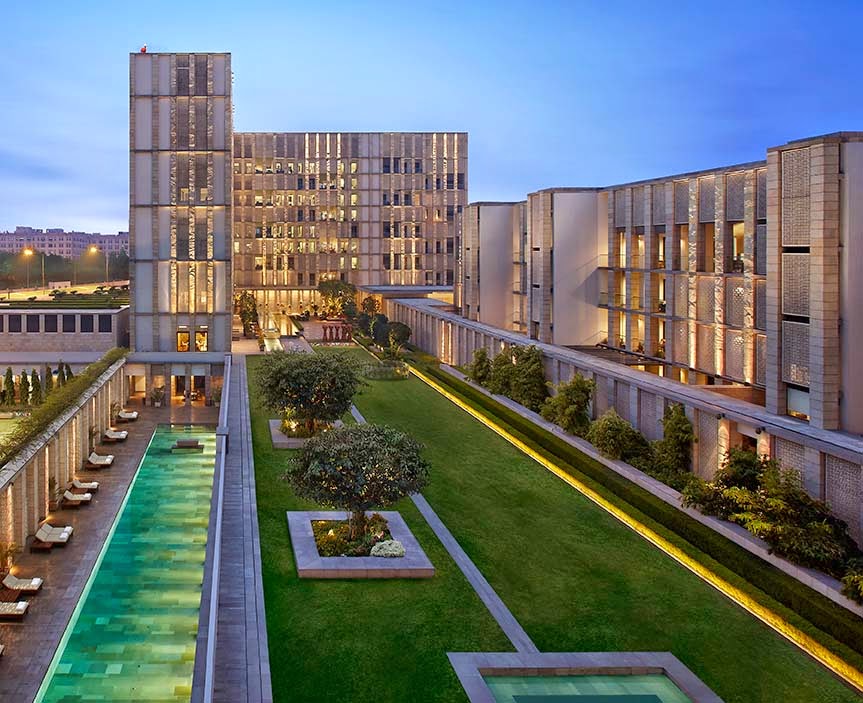 |
| The Lodhi hotel property includes a large sheltered swimming pool, tennis courts, and outdoor spots for quiet reflection. Guests often use the pool in the cool of evening for refreshing laps. |
Hill noted that he referenced India’s great history of palaces and temples and past building traditions through suggestion and association rather than replication, and through the reinterpretation of indigenous building forms as opposed to mimicry.
“We prefer to build upon what is there and to contemporize our understanding of what it can be,” said Hill. “I think of our design for The Lodhi as being current, but filtered through a sieve of traditional values.”
At the light-filled limestone entrance a large carved black stone water basin is filled with brilliant orange marigolds.
A butler silently guides guests along an enfilade of silent hallways. In the suite, a graceful bedroom has an efficient series of adjacent wardrobes, luggage stands and dressing tables. Everything in the right place. The scent of fresh tuberoses wafts into the air.
The hotel is expertly and gracefully co-managed by New Zealand-born former diplomat Robyn Bickford, and her husband, Manav Garewal. They pamper guests, opening up their Black Book for special sources for cashmere shawls, finding rare tickets for an event, taking care of all details.
In each suite, through a tall shuttered door is a wide sheltered stone terrace. Each suite has a heated plunge pool and on a terrace that’s open to the fresh air.
Privacy is perhaps the most precious travel luxury. The Lodhi feels like a personal residence. There are no obtrusive signs, and staff greets guests by name.
The hotel is set on 6 acres, has two wings, nine floors, thirty-nine rooms and twenty-eight suites, and there’s a panoply of restaurants, a hair salon, a lap pool, plunge pools, all sheltered by jaali screens to modulate light and intense outdoor heat.
The décor throughout has a very light and airy sensibility of modern Anglo-Indian, with dark exotic wood wall cabinets, bronze bowls filled with pomegranates, stone bowls with fresh tuberose blossoms, everything cohesively modern Indian. All furniture was locally crafted.
The Lodhi, a favorite for international auction houses, art dealers from London and New York, and museum types and art collectors from San Francisco, recently partnered with the Apparao Galleries of Chennai to showcase contemporary Indian art and sculpture around the hotel. Sharan Apparao, founder and owner of the Apparao Galleries, curates a revolving collection. The contemporary art adds graphic interest and vivid color to the stone interiors.
The Lodhi is a dramatic property, and a haven in fast-paced Delhi.
I can’t wait to return.
The Lodhi is a dramatic property, and a haven in fast-paced Delhi.
I can’t wait to return.
Best Books on India
On my recent visit to New Delhi, I spent hours at Bahrisons, founded in 1953, the best bookshops (there are three) in India. My favorite Bahrisons shop is located at the entrance to Khan Market, a vibrant cavalcade of style shops and restaurants. Bahrisons is crammed to the rafters with books—mostly literary, many best sellers, and books on Indian culture, history and politics. It’s very popular with the expats, with the diplomatic crowd, with students, and with politicians and lawyers from nearby offices.I linger among the stacks at Bahrisons for hours—looking through books on design, architecture, biography, and finding dozens of books to send back to California. Staff does an extremely efficient job of shipping. My recently purchased books arrived home before I did. The bookshop is so popular that they re-stock three times a day. Careful…they close for lunch from 1-2pm.
I checked with Anuj Bahri Malhotra and he suggested the following list of books on India.
BAHRISONS BOOK LIST:
Everything written by William Dalrymple. (www.williamdalrymple.uk.com)
“He knows India, he is a superb historian, and his writing is vivid and authoritative—and witty. Highly recommend,” said Anuj Bahri.
The witty detective novels of Tarquin Hall, featuring detective Vish Puri. (www.tarquinhall.com).
“Tarquin shows his love of India and Delhi in this amusing series. He knows Delhi today and it shows,” said Mr. Bahri.
Delhi by Heart: Impressions of a Pakistani Traveler by Raza Rumi (Harper Collins). An intimate anecdotal travelogue introducing readers to the buildings, but also people, characters. Inspiring. Said Anuj Bahri Malhotra: “It’s like a guided walk, with vivid narration.”
Delhi: A Thousand Years of Building by Lucy Peck (Roli Books) A highly detailed insight into Delhi’s architecture heritage. Well illustrated.
Delhi: A Novel by Kushwant Singh (Penguin). “It’s irreverent and inventive, it’s magical realism. A bestseller,” said Mr. Bahri.
Perpetual City, A Short biography of Delhi, by Malvika Singh (Aleph). Singh, a noted Delhi journalist, is also the author of a recent reference book on Lutyens Delhi. This is her love letter, very insider and full of lively anecdotes. Opinionated. Excellent.
Delhi: Fourteen Historic Walks by Swapna Liddle. Heritage discoveries, secret walks and classic sites like the Red Fort, Lodhi Gardens and Humayun’s Tomb (I’ve written about it here).
Trickster City Writings from the Belly of the Metropolis by Shveta Sarda (editor). “These young writers are fresh, they know Delhi, and they chronicle emotion, experience, events, some rather documentary,” said Anuj Bahri.
DIANE’S INDIA BOOKS FILE:
Let’s say you’ve never been to India, and you’re excited and very curious and scared and nervous…and want to know more.
Check through all of these lists and Mr. Bahri’s list. And start collecting the ones that appeal to you. Read non-stop. The information and knowledge—and sense of India—you gather and harvest will enrich your trip and explorations.
I have a lifetime of books on India. I read biographies (the Maharani of Jaipur, Sri Aurobindo, Gandhi), history (all of William Dalrymple’s volumes), memoirs (Pamela Hicks), and many Indian fiction writers and dynasties of literary families (the Desai family) and many books on histories of the maharajahs and Indian life, films (Satyajit Ray) culture, music, architecture and textiles.
I recently read The Guide by R. K . Narayan (Penguin) about small-town Indian life. Enchanting. I also found Chowringee by Sankar (Mani Sankar Mukherji) (Penguin). It’s set in Calcutta, and it immediately immerses the reader in its hullabaloo.
I love the books of writers like V.S.Naipaul, as well as Amitav Ghosh, and Jhumpa Lahiri (writing about Indian expatriates in books like ‘The Interpreter of Maladies’)…her writing is exquisite. I also love Kiran Desai (“The Inheritance of Loss) and books by her mother, Anita Desai.
Books I favor and have enjoyed are background, in-depth learning, rich detail, research, factual information always written with grace, charm, wit.
‘City of Djinns’ by William Dalrymple (2003) is a vivid account of his first year living in New Delhi. He’s now become a favorite historian of the region’s great stories. Dalrymple’s nature is contrarian, and often dyspeptic, but he has a lovely admiration and intense interest/passion for Indian people and history.
‘The Last Moghul’ also by Dalrymple, offers the panorama of one of the last significant rulers and dynasties.
‘Passage to India’ by E.M. Forster (1924) paints a sympathetic and textured account of British/India encounters during the colonial period.
‘At the Court of the Fish-Eyed Goddess, Travels in the Indian Subcontinent’ by William Dalrymple (1998) is a wide-ranging series of essays on Indian life, culture, politics.‘A Princess Remembers The Memoirs of the Maharani of Jaipur’ by Gayatri Devi (1996) sketches a romantic view of her childhood, subsequent marriage to the Maharajah of Jaipur, and jetset life. She founded schools for girls and a grade school in Jaipur, and was instrumental in protecting and fostering traditional fine crafts and arts of the region.
‘The Raj Quartet’ by Paul Scott. These are the books on which ‘Jewel in the Crown’, the hit PBS show, was based.) Scott’s writing is wonderfully accomplished and richly sympathetic to all of his characters. British, insider, revealing.
‘Freedom at Midnight’ by Collins and LaPierre. Blockbuster, full of detail, research. A closeup view, with private and upclose knowledge of Gandhi's life and death. Must read.
‘Daughter of Empire: Life as a Mountbatten’ by Pamela Hicks (2011) offers insight into the last days of the Raj—and she was in the center of it all.
‘Indian Summer The Secret History of the End of Empire’ by Alex von Tunzelman (2009). I read this on the way to India, when it first came out. Her research is impressive, and it’s another slice of insight into this complex time of history.
‘Chasing the Monsoon’ by Alexander Frater (1998). Witty English writer sets off to follow the monsoon, one summer. Romantic and charming.
And Robyn Bickford recommends the following India books, for different perspectives:
Quilts of India-Timeless Textiles by Patrick J Finn published by Niyogi Books. It is such a pleasure to learn more about crafts and decorative arts of India. This is is a great record with very clear photos of another dying art.
Sam Miller, a young English writer, has written two books, Delhi: Adventures in a Megacity and A Strange Kind of Paradise: India through Foreign Eyes which are witty and fresh, and both eminently readable.
I know you’ll want to read them all. And tell me your favorites. I love discovering new books.
Happy reading!
Favorite Shopping
New Delhi is alive with fantastic shopping. I must say that for me shopping is not a major focus, though dear friends spend days finding Gem Palace jewelry, bangles, sandals, saris, Anokhi tunics, and handwoven fabrics, and beautiful adornments. Delhi has emporiums and stalls and shops and centers…and that is not how I want to spend much time in India. I want ‘only in India’ adventures, not a lot of shopping. An exception: cashmere shawls and tea (see below. And…Khan Market, which is near The Lodhi, and is bustling and colorful, with shops like Anokhi (block print shawls and dresses), as well as Bahrisons books.The Great Find: Kashmir Loom
Kashmir Loom shawls and scarves are available at Barney’s New York stores around the US, and at many international stores and boutiques. But I prefer to go to the source—where every style is available.
Robyn Bickford at The Lodhi suggested that I would enjoy meeting Jenny Housego, the co-owner of Kashmir Loom. I made an appointment to see the company's selection of fine cashmere, silk, wool and cotton textiles made for the Indian and international markets. Many cashmere connoisseurs consider the company's shawls and blankets to be the finest available.
Kashmir Loom was created by Jenny Housego and her Kashmiri partners, brothers Hamid, Zahid, and Asaf Ali, and their family in Srinagar, Kashmir.
Jenny, who is English and lives in New Delhi was formerly a textile historian, and worked at the Textile Department at the Victoria and Albert Museum in London.
I arrived at the Kashmir Loom showroom. The company makes the most exquisite traditional shawls and scarves in handspun and hand-loomed cashmere.
Newest designs include the pioneering use of shimmering metallic threads in hand-woven shawls. Gold, silver and rose gold shawls are very beautiful. The quality of the textiles is the best I’ve seen in India. I love embroidered shawls in very fine natural undyed handspun cashmere (think taupe cashmere with exquisite borders of contrasting silks)—but they also weave rainbow-bright shocking pink, turquoise, magenta, and indigo shades to brighten a winter day.
Prices from $150 for a natural cashmere scarf.
By appointment only: Retail
C-65, Basement, Nizamuddin East, New Delhi 10013 India
Phone: +91.11.2431.8947, 4058.8650
www.kashmirloom.com
Indian Tea
I drink tea most afternoons around 4pm. My family is English—and in the late afternoon every day, I put the kettle on, warm up a classic white porcelain teapot, and add Assam loose-leaf tea to the pot.
I love Fortnum & Mason’s Assam Superb, packaged in an elegant pale celadon canister.
But in India, I always taste and buy special teas…that are only available in India.
My favorite source is the company that supplies tea leaves to The Lodhi hotel— Mittal Stores.
The selection of loose-leaf teas includes many Assam types and Darjeeling, Nilgiri and Sikkim, as well as Chinese. Very authentic and traditional. Inexpensive and light to pack in luggage. And so enjoyable at home.
12, Sunder Nagar Market, New Delhi is my favorite of their locations.
www.mittalteas.com
Information: [email protected]
Details:
The Lodhi
Lodhi Road, New Delhi, phone from US 800-477-9180. Rates from $550. www.thelodhi.com. Information: [email protected]
Joint General Managers: Robyn Bickford and Manav Garewal
Note that The Lodhi has very close ties with the Aman hotel/ resort group, and travelers who are addicted to Aman resorts find The Lodhi very compatible and comparable. Like Aman resorts, The Lodhi is low-key luxury and ultra-private and discreet. Just as Aman avoids glitz, so The Lodhi has perfected comfort, elegant simplicity, and friendly unpretentious service and attention to guest comforts.
Art Gallery:
APPARAO GALLERIES, Chennai, Delhi and Bangalore.
[email protected]
[email protected]
Photo credits:
Joint General Managers: Robyn Bickford and Manav Garewal
Note that The Lodhi has very close ties with the Aman hotel/ resort group, and travelers who are addicted to Aman resorts find The Lodhi very compatible and comparable. Like Aman resorts, The Lodhi is low-key luxury and ultra-private and discreet. Just as Aman avoids glitz, so The Lodhi has perfected comfort, elegant simplicity, and friendly unpretentious service and attention to guest comforts.
Art Gallery:
APPARAO GALLERIES, Chennai, Delhi and Bangalore.
[email protected]
[email protected]
Photo credits:
Hotel images courtesy of The Lodhi, New Delhi, used with permission.
Images: Elephant statue photos by Diane Dorrans Saeks (and my driver).
Images of Kashmir Loom, courtesy Kashmir Loom.
Images of Bahrisons, courtesy Bahrisons.






